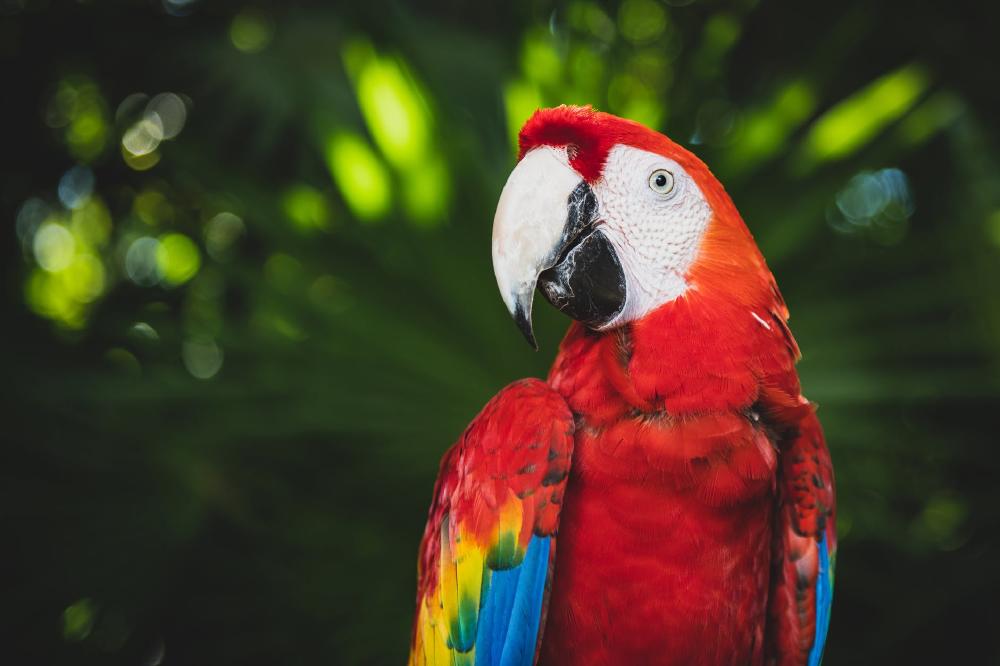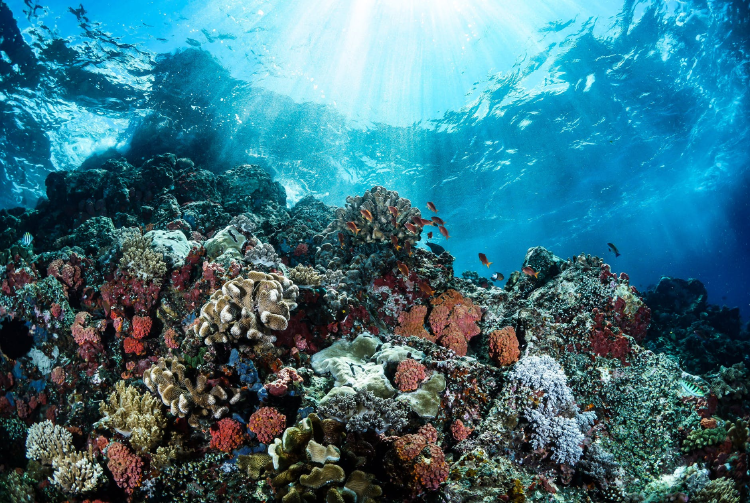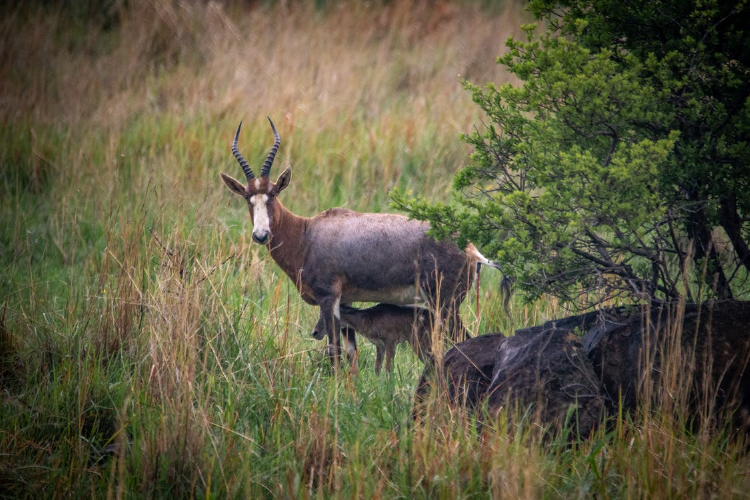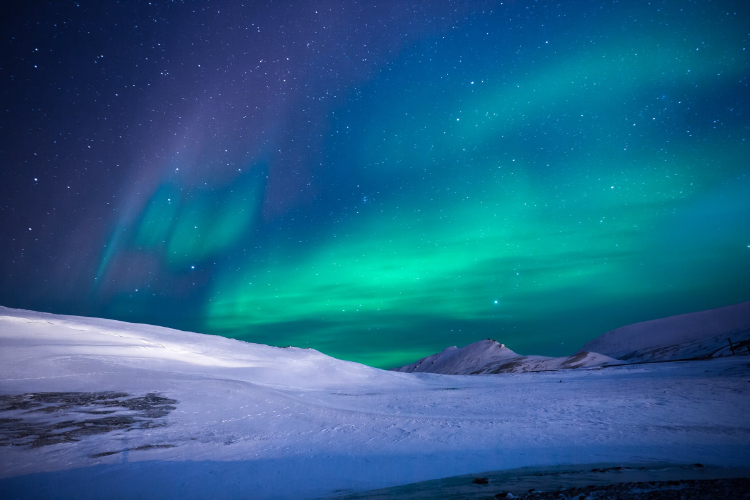
As a matter of fact, now that I'm thinking about it, I've never fully known what I should know about the concept of biodiversity. Maybe because it's one of those things that one takes for granted or you just simply ignore. But unfortunately, taking biodiversity for granted is not what we should be doing right now. Why? because this is not the case for many of today's range of species inhabiting Planet Earth. We'll share this time, Biodiversity: Science based Facts you Should Know.
What we are bringing today to our regular table of food for thought, is a close up to all the complexity that worldwide biodiversity represents: What is biodiversity? What elements in our ecosystem are active participants? Why is so important that we start caring about preserving it? We'll try to explore some of these questions along with you. Ready?
Biodiversity can be defined as the wide range of species - whether plants, animals, bacteria or fungi or humans- living on Planet Earth.
Biodiversity is mostly responsible for the perfect balance of our ecosystems. But that it's what is at stake right now: while many species are yet to be discovered by natural sciences, many others that we already know are suffering the consequences of human activities and slowly starting to walk the path to extinction.
If you are interested about this debate, you are invited to read our article Complete Guide On Biodiversity Definition and Why It's Important.
What elements of the ecosystem play part in biodiversity. Well actually, every one each of them from a frog to a human play a crucial part in the balance of a given ecosystem. But how come?
In very Darwinian terms, over generations, the species that now live in pur Planet have adapted and developed peculiarities that make them different from other species. At the same time, though, there is always a network that develops of co-living and codependency of all these species to function in a balanced ecosystem. But why do Science keep en eye on biodiversity?

Well, in the first place because there is still so much out there to discover. Scientists also study how a group of species are only found in certain ecosystems, name a rainforest for instance and become experts on it. But they also study biodiversity on ecosystems because there is real concern among the scientific community about the negative impact of human activities on different worlds.
Places like Mexico, Brazil, South Africa, Madagascar and the South West of the U.S are home to more diversity than other places. These places that hold an enormous amount of biodiversity are called hotspot. Let's explore together some of the richest hotspots all around the world.
These are the most common type of ecosystems especially in temperate regions. However, they are also the least protected and most endangered ones. Mainly because of monoculture and the amount of natural nutrients that the soil loses in the process, many changes in the local fauna and flora of grasslands are happening, causing many species to reduce dramatically in numbers or even vanishing.
Let's take for example, the Grassland Biome located in South Africa, more precisely in its central plateau and some inland areas of Eastern Cape and KwaZuluNatal. Local people call this extensions of land Grassveld and they are characterized by a flat and rolling land and a single layer of grass that prevails. Rainfalls and grazing are major aspects that will rule population of any kind over these grasslands. Frost and (natural) fires play an important role as well: that's why you don't see trees on grasslands, except for geophytes (bulbs) -which are abundant- or isolated trees in a few specific areas.

Grass on these areas is extremely tolerant to grazing, mowing and natural phenomena, actually overgrazing promotes the growth of more grass. In the case of South Africa, almost everything comes from the Grasslands: dairy products, beef, wool. But the king of these pastures is the maize crop! The biggest population of corn live here although sunflowers and sorghum are very common crops too.
As regards its fauna, many species have decreased in number over the years. Not long ago, these grasslands were home to big groups of animals such as the Black Wildebeest, the Blesbok or the Eland that now only survive in nature reserves. But the Grasslands Biome is still rich in a wide diversity of birds like the Blue Crane or the Helmeted Guinea fowl.
We are now leaving the warm temperatures of the South African savanna to dive into a much hostile environment: the Arctic Tundra, where biodiversity blossoms too.
What is the Arctic Tundra? It is a very harsh, one would say almost unlivable, frozen territory of low, dumpy fields and no tress that extends throughout the northern parts of Europe, Asia, North America and great part of Greenland, too.
According to scientists, this is the coldest biome in the entire world. Can you imagine that? Well, it's pretty easy to imagine if you consider that the sun does not rise for almost 6 months of the year and temperatures can go down up to -20 degrees Fahrenheit during the winter season.
There is something very particular about this tundra and it's called permafrost. What's that? Land that remains forever frozen usually under the ocean. This frosted subsoil, however, allows the presence of abundant fossils. There are only two seasons in the Arctic Tundra: winter and summer and although we may say that these are really inhabitable regions, life still thrives. The tundra is home to animals like goats, marmots, insects such as beetles and even butterflies!

Maybe it goes without saying but as water occupies 70% of the planet's surface, then we must mention the Marine Biome, which is actually the largest biome in the world. The Marine Biome includes all five major oceans and its water is so high in salt that species have evolved to have mechanisms that help them get rid of the extra salt, you know?
We are going to talk about the Marine Biome because it's the most endangered ecosystem. Right now as we are talking the marine fauna and flora are suffering from the negative consequences of human actions from overfishing, pollution to dumping all kind of trash whether a plastic bottle or large quantities of chemicals that come from factories. Everything goes to water.
So you can imagine that living there is not something easy to do, then. The world's oceans together with rainforests - another type of ecosystem- are responsible for keeping the Earth's temperature patterns. Climate Change and Global Warming are directly connected to the alterations in these biomes. Apart from acting as a climate buffer, oceans are also home to billions of photosynthetic plankton that basically supports every living Marine thing. Since they produce high levels of oxygen, plankton directly supports the wide range of species that live under the sea.
Here is the deal: Biodiversity needs protection because as we've mentioning so far, human activities are negatively affecting ecosystems all the world over. We've caused possibly irreversible damage to our Planet already due to irresponsible use of our natural resources. Biodiversity allows companies to grow and earn millions and we as humans can't live without it. We just can't.
We are as much part of the ecosystem as everything else is. But we are the ones failing into keep the balance. And that requires immediate action.
If we haven't convinced you yet, we are going to share now with you some many advantages that come with a heathy and balanced biodiversity.
A balanced biodiversity will naturally protect water resources, it will also provide nutrition of soils, pollution levels can be reduced significantly, climate can stabilize and natural catastrophes can have a lesser impact on human population.
The Australian Coral Reef is a great example fo that, check the following post: Why Coral Reefs are Dying: How Can we Prevent This?
And we are not only talking about food, we are talking about beautiful wood for furniture, delicious and beautiful flowers for decoration or ornamentation. We also know of a lot of medicinal plants that are the basis for both natural medicines and pharmaceutical drugs.
More examples here: A Few Biodiversity Examples and How Are They Linked
Biodiversity provides all that is necessary for research and scientific discoveries that can improve our lives or the life of the whole Planet: Biology, Chemistry, Bioengineering, Archeology, etc. The social and natural sciences cannot exist without a healthy biodiversity.
Besides, all natural scenarios are wonderful places to visit and connect with nature. This is not only recreation but revenues for the economies.

Biodiversity freely teaches us some useful cultural values, too: every living organism is equally important. The human species has falsely claimed some sort of superiority over Nature and now we are facing the terrible consequences. Not because Mother Nature is vengeful but because if something is altered or disappeared, that will necessarily take a toll on us, rather sooner than later. Think about Covid and the pandemics we are now going through, think about how everything started in those pig farms and you'll get what I'm saying.
So... these are just some of the very few reasons why we should be so conscious and responsible with the natural world around us. We need to reverse the trend of abusing our natural biodiversity.
The more we care and take action to protect biodiversity the better: the richer the range of life, the greater the possibilities for scientific discoveries and thus, economic growth and more rapid responses to the changing climate patterns.
So what do you think, warrior? Are you ready to protect biodiversity?
Learn more here: Climate Crisis Books: What You Must Read to Know What's happening